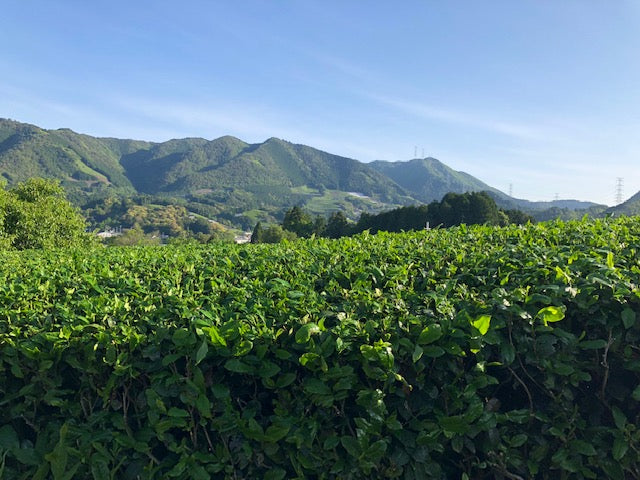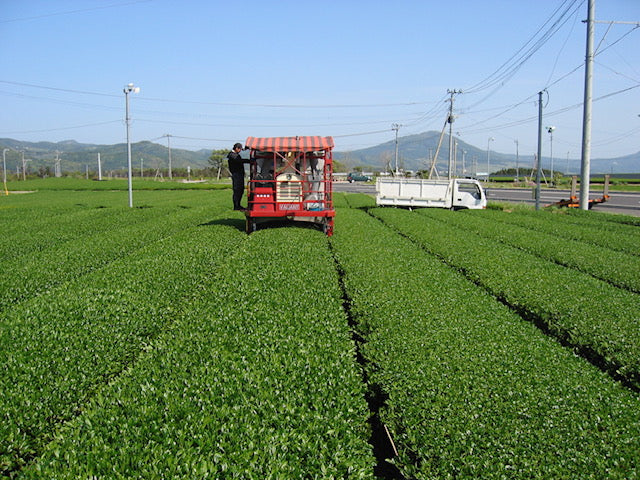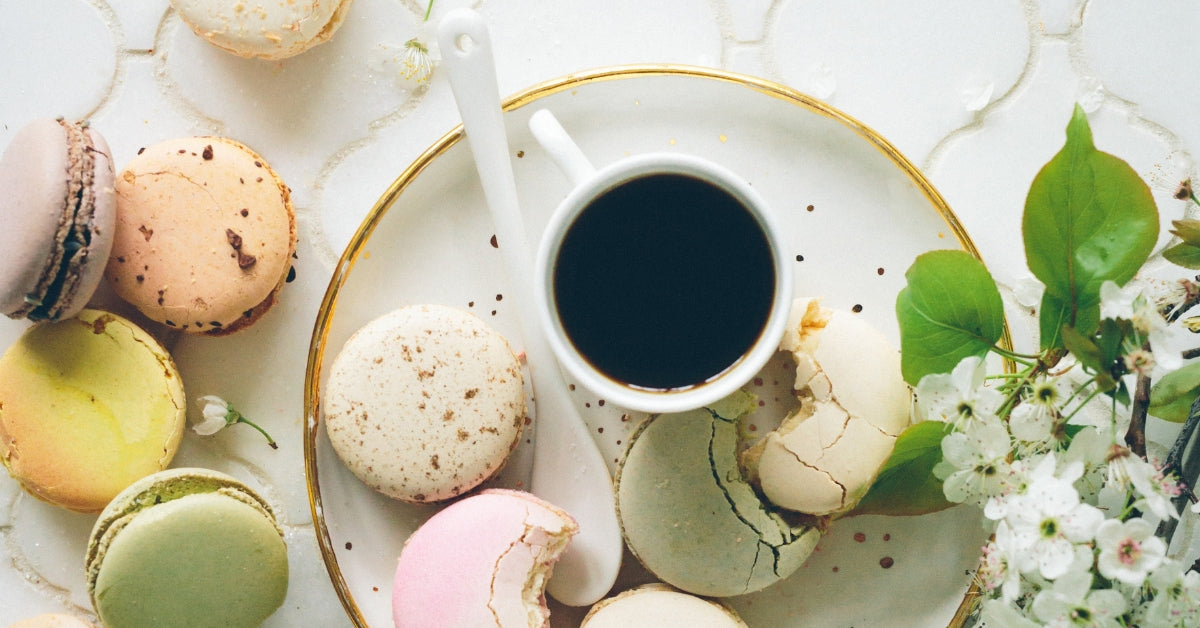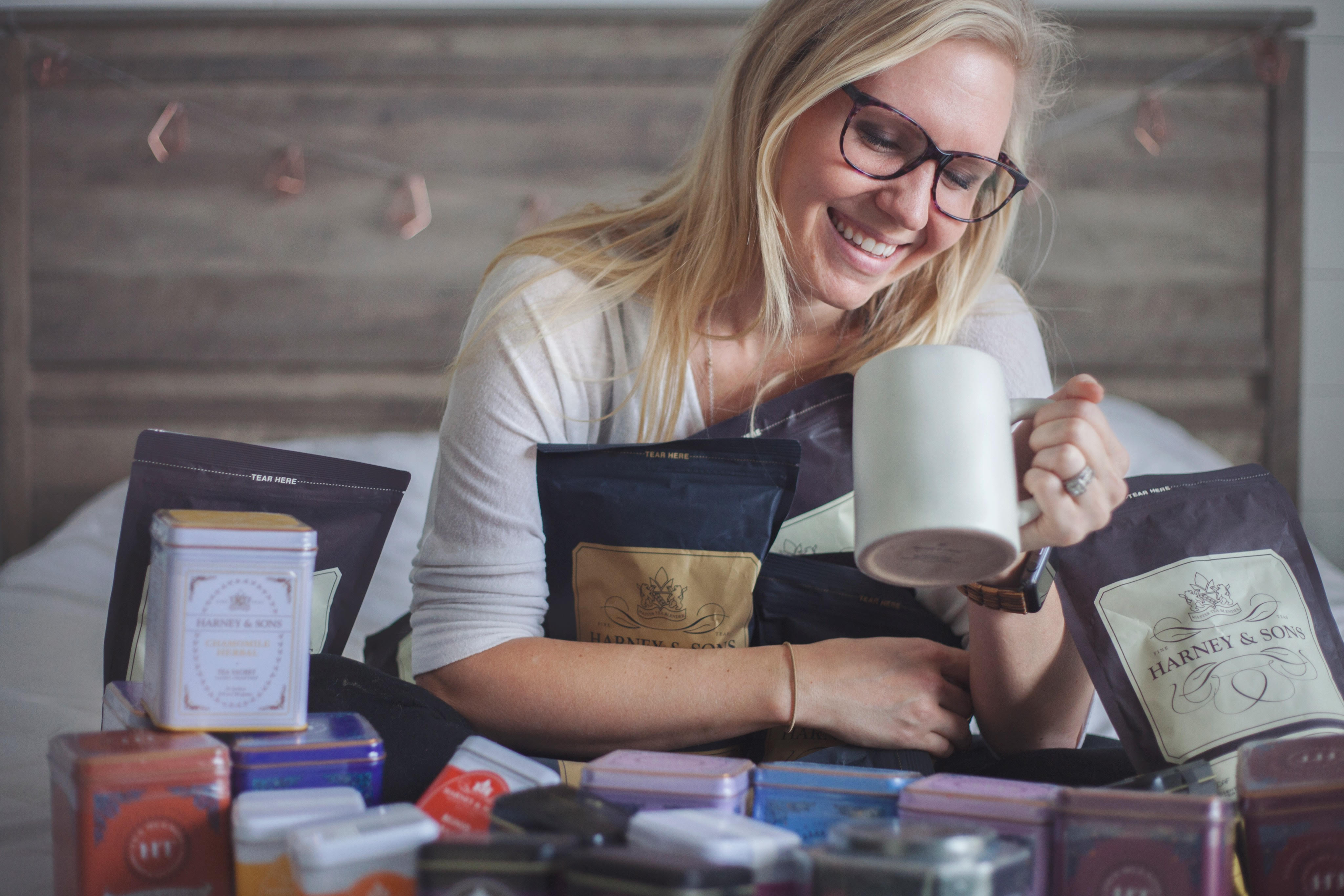Harney & Sons Fine Tea has been importing Japanese teas directly from Japan for over 25 years, and the family has decades-long personal relationships with the best tea growers in the industry. Michael & Emeric Harney, along with their tea buyer Elvira, travel to various parts of Japan searching for the best teas the region has to offer. Emeric will lead a trip of our customers over to Japan in a few months. Continue reading to learn more about the Japanese tea region and the areas Harney & Sons source from.
The Japanese Tea Tradition
The Japanese tea ceremony is a language all of its own. A host will hold tea ceremonies using ground matcha tea to show respect for a guest or to celebrate different seasons. For example, the first tea ceremony held in January is called Hatsugama 初釜, which translates to “first kettle.” Hatsugama is the only time when the tea teacher prepares tea for all his students so it is very special. The lengthy process includes steps for preparing your home, how guests can enter your home, the order in which utensils are brought into a room, how these utensils are cleaned and warmed, the brewing and the cleanup. These details can vary depending on the time of day and season.
The Japanese Tea Regions
Tea is produced almost everywhere in southern Japan, but a few of the most popular areas are Kagoshima, Shizuoka and Uji. Around 40% of Japan’s tea plantations can be found in Shizuoka. The most widespread Japanese tea is sencha. It is produced everywhere tea is grown in Japan and are some of the most popular teas we sell.
On Mike’s first trip to Japan, about 18 years ago, a wise tea man said: Kagoshima is the earliest, Shizuoka makes the most and Uji makes the best tasting. That wise man was from Uji, but this is mostly true.
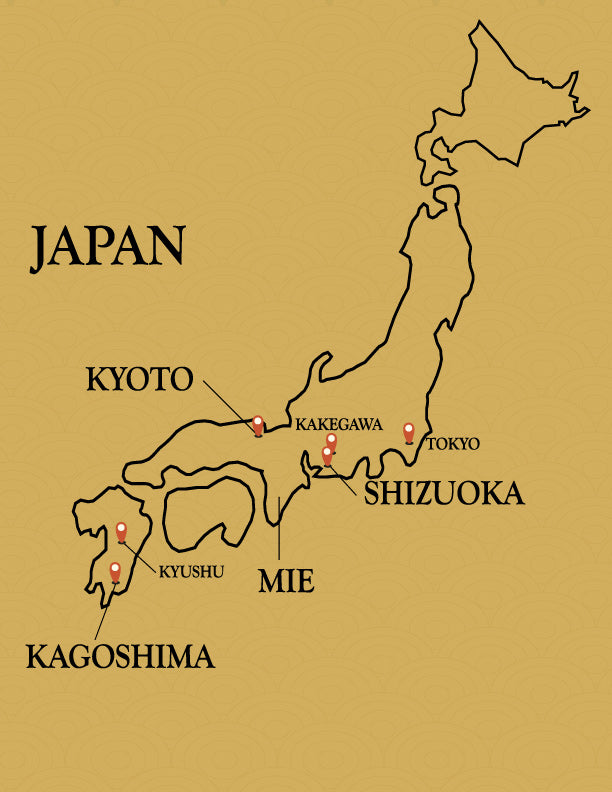
Shizuoka
With around 40% of Japan’s tea plantations, Shizuoka is the largest tea-producing area in Japan. Tea cultivation in this area is said to have begun as early as the 1200s. The area has very rich volcanic soil and plenty of fresh water. However, your tea may taste differently depending on where you purchase it from due to the varying climate. Some areas in Shizuoka may get more sun, while still other areas are covered in a mist until late morning. All of these things, along with cultivation and production methods, give the teas from this area a very distinct flavor.
Kagoshima
Kagoshima is the second largest producer of unprocessed tea after Shizuoka. It is on the southern tip of Japan’s southern Kyushu Island. Kagoshima green tea and some of the best Sencha, Bancha teas are grown here. The climate in this region is mild, but it is a volcanic region with mineral-rich, fertile soils.
Uji
The old Imperial capital of Japan was Kyoto. A variety of products were made for the Imperial court in the regions that surrounded Kyoto. Uji became the center for tea and ceramics. Uji produces some of the best shade-grown Gyokuro & Matchas available. In fact, Uji Gyokuro is the highest grade of all Japanese green tea varieties. Why choose a shade-grown green tea over others? The shade increases chlorophyll content in the tea leaves to give them a bright green color, also the shading makes special chemicals that give the tea more body (or a creamier mouth feel) and sweetness. The tea producers have had the time (our friend’s family has been doing it for over 350 years) to develop many of Japan’s teas: Genmaicha & Hojicha for example.
South of Kyoto lies Wazuka, which is a small town hidden by mountains. With over 800 years of tea history, Wazuka grows only around 2% of the tea produced in Japan, but has some of the highest regarded teas in the nation. Originally the tea grown in Wazuka was used for medicinal purposes by Zen Buddhist monks, but today teas from Wazuka, like Matsuda’s Sencha, are known around the world for their distinct flavor. Mike stayed one night at a Tea B&B last year, where after touring the tea factories at night to sample the brand new teas he had a meal where all the dishes used fresh tea leaves.
Check out some of our favorite posts below to learn more about the world of tea:













